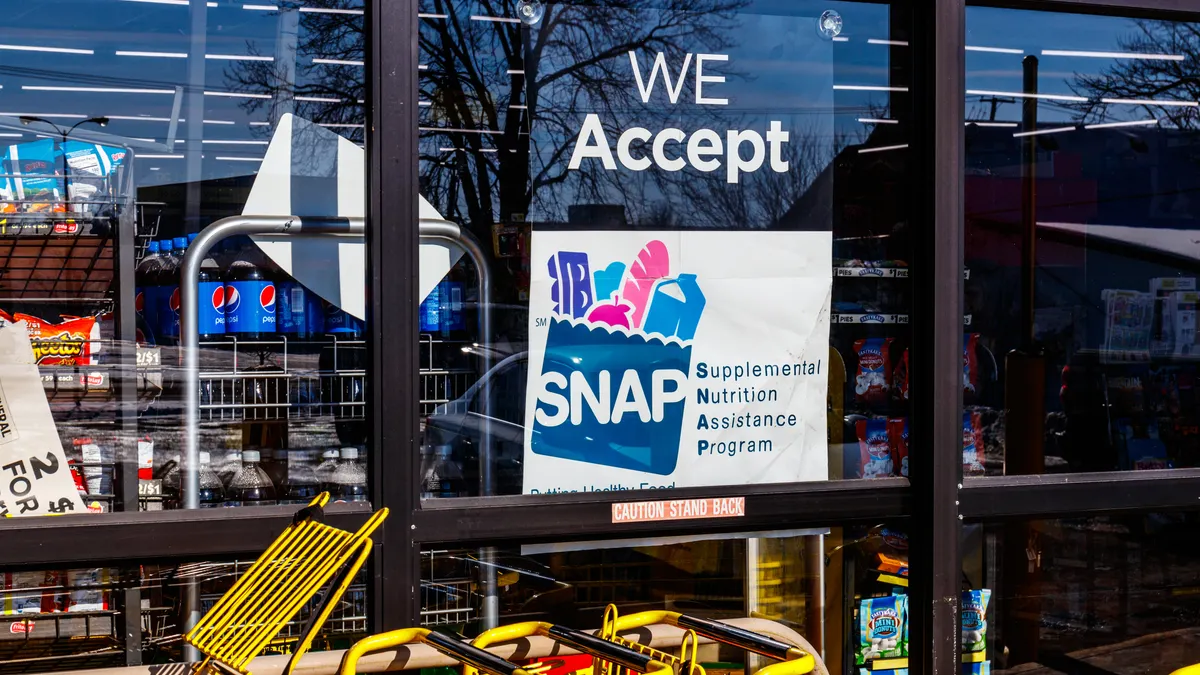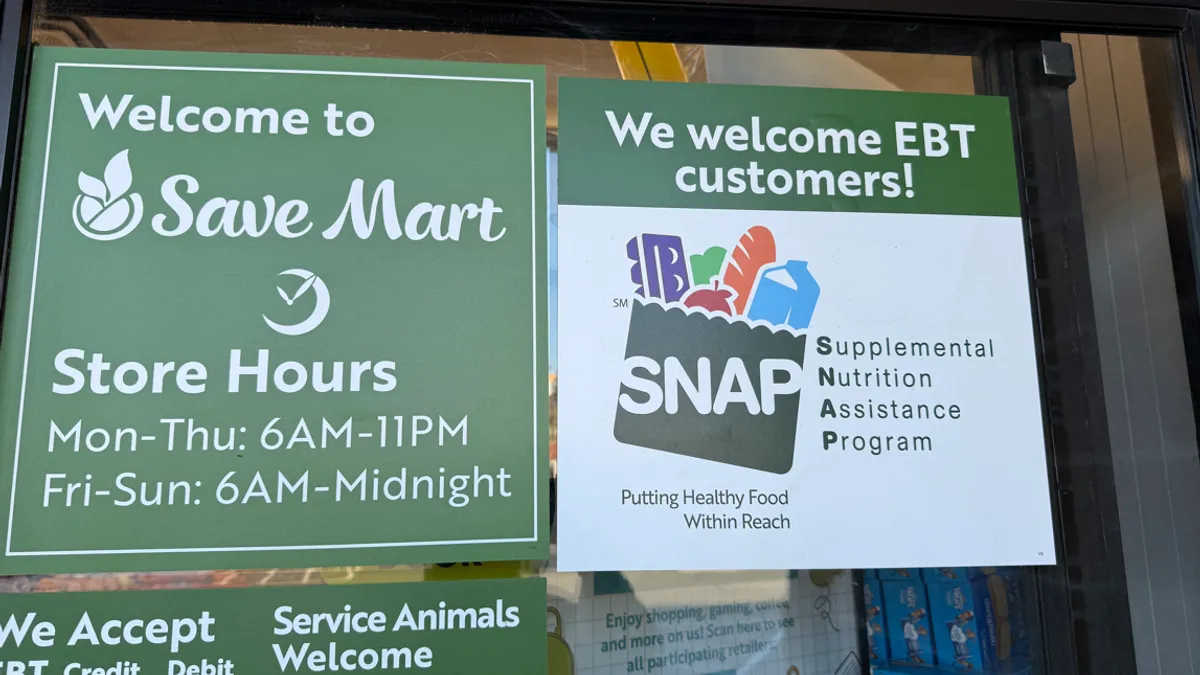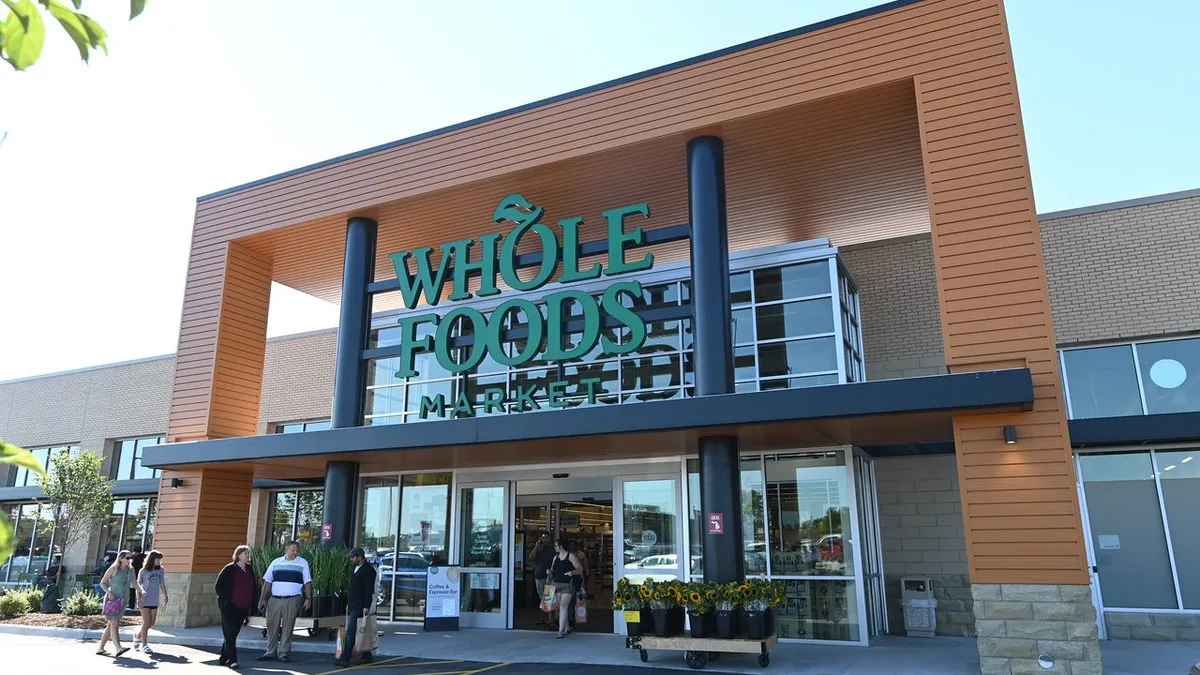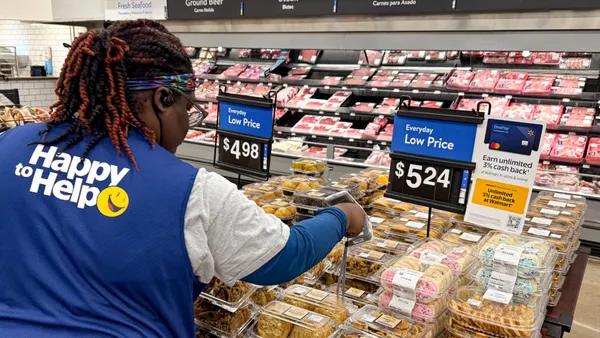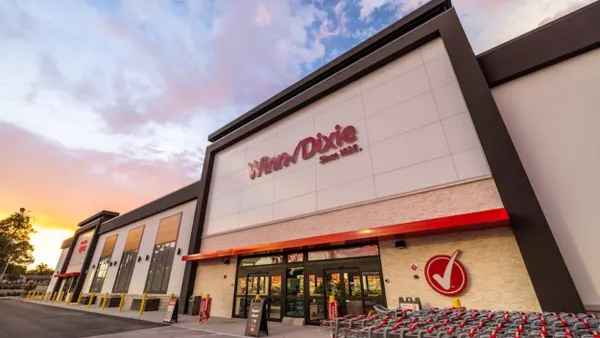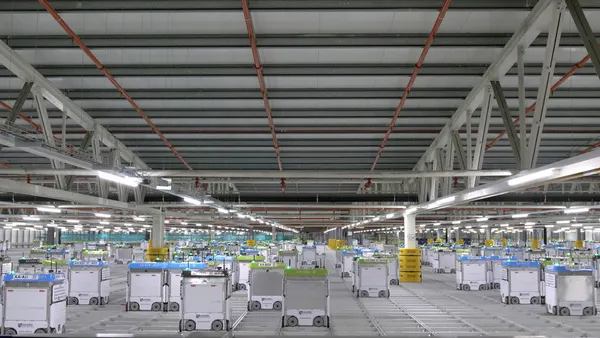Dive Brief:
- Upfront costs for retailers to implement new SNAP purchasing restrictions are expected to total roughly $1.6 billion, according to a new report from the National Association of Convenience Stores, National Grocers Association and FMI – The Food Industry Association.
- Of that estimate, convenience stores will shoulder the most costs ($1 billion), followed by grocers ($305.1 million), then supercenters ($215.5 million) and lastly small-format stores ($11.8 million).
- The trade groups’ report separately forecasts that food retailers will face just shy of $760 million in annual ongoing costs for compliance, of which grocers will pay just over $281 million.
Dive Insight:
The significant cost and operational hurdles that food retailers face with new and proposed SNAP regulations are largely coming from the shift to give states more control over what SNAP consumers can purchase with their benefits card, FMI said in a statement.
“[P]roposed restrictions represent significant new costs and operational challenges,” the three trade groups said in a joint statement. “Without clear guidance and adequate time, these well-intended changes will create unexpected difficulties of both retailers and the customers they serve.”
Main cost drivers for food retailers include technology updates, software and point-of-sale system upgrades, as well as more labor to help meet new stocking, replenishment and labeling requirements.
The impact analysis report’s $1.6 billion estimate for upfront costs is an amount equal to 1.9% of 2024 net income for all food retailers. The report comes at a time when an increasing number of states are requesting and receiving approval from the USDA to set state-level restrictions on what kinds of foods consumers can spend their SNAP benefits on. So far, 12 states have been granted waivers.
For the ongoing maintenance costs, convenience stores are projected to shell out the most money ($378.6 million), followed by supermarkets. Meanwhile, supercenters will spend roughly $81 million and small-format grocers are estimated to spend $18 million in annual maintenance costs.
While the majority of the upfront and ongoing costs are attributed to convenience stores because of their large cross-country footprint, the report noted that smaller stores are likely to weather the steepest financial impacts.
The report is based on a survey of members of the three trade groups in June and July, which included questions about one-time and ongoing labor and technology costs.
The three trade groups said that SNAP retailers are urging the USDA and states to extend the timeline for implementing SNAP restrictions and provide clear and actionable definitions of which foods are restricted.
“Clear, consistent definitions and a more realistic timeline would help retailers successfully implement this new reality while keeping SNAP access smooth and dependable,” Peter Matz, director of food, pharmacy and health policy at FMI, said in a statement.


